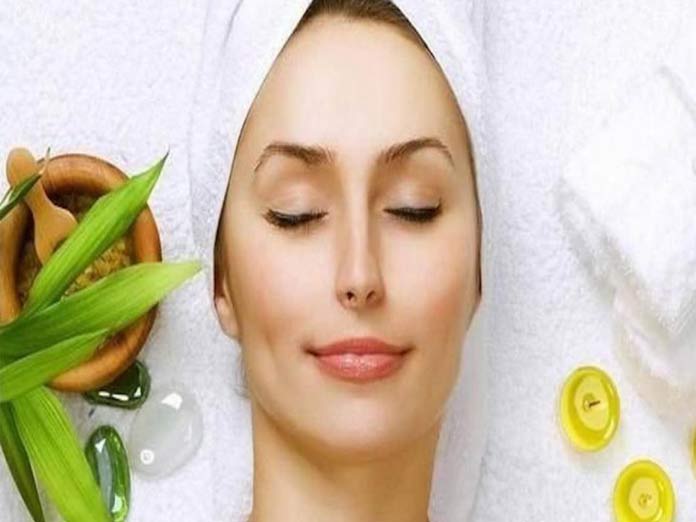Live
- Mahesh Babu’s AMB Cinemas set to open in Bangalore
- YSRCP MP candidate Vijayasai Reddy assures protection of Muslim interests
- Vishwak Sen completes dubbing for ‘Gangs of Godavari’ teaser
- Tamannaah summoned by Maharashtra Cyber Cell over alleged Fairplay betting app involvement
- CM Jagan Files Nomination in Pulivendula Amidst Enthusiastic Support
- YSRCP MLA Candidate Mekapati Vikram Reddy Files Nomination for Atmakur Constituency
- Former Minister Dr. Ponguru Narayana participates in Sri Ram Rathotsavam at Sri Kodandaramalayam, Balajinagar
- Cong wants to rob inheritance rights of common people: Anurag Thakur
- Revanth’s tall promises are ‘near impossible’ to achieve: Eatala
- New DOT Regulations: Airlines Must Provide Cash Refunds for Flight Cancellations and Delays
Just In

Centuries ago people relied on nature and natural ingredients to beautify themselves In India, during ancient times, women used colour to decorate themselves, but such ingredients were also linked to their medicinal uses For example, henna has its basis in Ayurvedic healing, where henna was applied as a cooling paste, to bring down fevers, or cure heat rashes
Centuries ago people relied on nature and natural ingredients to beautify themselves. In India, during ancient times, women used colour to decorate themselves, but such ingredients were also linked to their medicinal uses. For example, henna has its basis in Ayurvedic healing, where henna was applied as a cooling paste, to bring down fevers, or cure heat rashes. Gradually, it began to be used to colour the hair and paint intricate patterns on the hands and feet, a tradition that exists till today. Henna is so much in use today and has its basis in the ancient dyeing method when chemical dyes were unknown. Similarly, ingredients for lip colour were those that cured stomach ailments. The bark of the missee tree yielded a red colour, which was used for the lips, or as rouge on the cheeks.
The Mughal queens were known to use the powder of emerald, turquoise and pearls as make-up for the eyes, the way we use eye-shadow. Of course, such trends do not exist now, but we still make ‘kajal’ and ‘surma’ the way it was done during ancient times. In India, 'kajal' and 'surma' was used, while the ancient Egyptians, both men and women, had their eyes heavily lined with kohl.
Today, with the back-to-nature trend sweeping the world, we have gone back to ancient times, when plant extracts were used for skin and hair care. Actually, plant and herbal extracts have shown a lack of harmful after-effects. In fact, many herbs help to soothe the skin and cure skin irritation. The use of plant ingredients is, therefore, a way of ensuring safety from harmful effects.
Neem: One of the most popular trees in India is neem. It has a history which goes back thousands of years. Over the centuries, neem has been highly valued in India for its healing and purifying properties and it is probably the most widely used among plant products. Like ancient times, we still use every part of the neem tree for healing purposes. One of the most common uses of neem in India is for cleaning and brushing the teeth, for which the tender twigs are used. Ancient Ayurvedic prescriptions record that neem is ideal for preserving and protecting the teeth and the gums from disease and decay. Pastes, infusions and decoctions are made from the leaves for local applications on the skin and scalp. The oil obtained from the seeds has been applied as a dressing in chronic skin and scalp problems. Today, it is used in several skin and hair products, like hair oils, shampoos, rinses, conditioners, toners, creams and ointments.
Sandalwood: It is also one of the most popular cosmetic ingredients used in India. It has been mentioned in ancient Indian texts as far back as the 5th century BC. It has powerful germicidal and antiseptic properties. It soothes the skin and heals inflammatory conditions. Sandalwood paste has been used since ancient times for beauty care and for its fragrance. Today, its oil and extracts are used in many cosmetic preparations.
Sea salt: Exfoliating with pure sea salt has been used for beautifying centuries ago. It cleans dead skin cells and also treats acne, pimples effectively.
Beer: Applying beer on hair and exposing suds-drenched locks in direct sunlight for an hour or two give shinning long lustrous hair and it has been practised by high rich class women centuries ago.

© 2024 Hyderabad Media House Limited/The Hans India. All rights reserved. Powered by hocalwire.com







